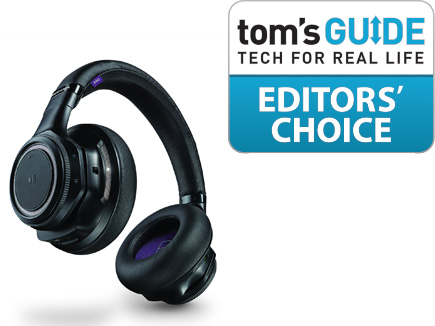Tom's Guide Verdict
The Plantronics BackBeat Pro Wireless Headphones deliver rich audio, good active noise cancellation and more than 24 hours of battery life.
Pros
- +
Good active noise cancelling
- +
Can play music without battery
- +
Long Bluetooth range
- +
Loud, balanced audio
- +
Easy-to-use controls
Cons
- -
Somewhat bulky
- -
In-line remote not included
Why you can trust Tom's Guide
Meet the headphones that can do just about anything. Somehow, Plantronics managed to cram NFC, active noise-cancelling technology and Bluetooth with a range of 300 feet into the $249 BackBeat Pro headphones. On top of all that, these comfy over-ear headphones deliver loud, reasonably accurate audio with more than 24 hours of battery life. These are just some of the reasons that the Plantronics BackBeat Pro are one of the year's best sets of headphones.
Design
The BackBeat Pro employ a functional and handsome design. They won't turn heads in a crowd, but the cans do offer some interesting design notes. Decorative, silver-metal faux-grilles on each ear cap add a bit of flair to an otherwise subdued look.
MORE: The Best Headphones Available Now
The headband is wrapped in soft, supple black leatherette. The material at the top of the band has a subtle diagonal pattern, while the leatherlike material along the bottom has a meshlike pattern, hiding a plush strip of foam.
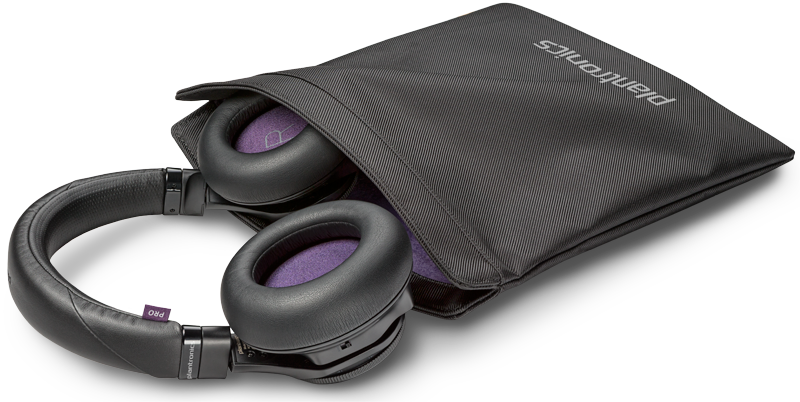
A small purple tab embroidered with a Pro logo adds a small pop of color, but the silver metal extenders with the equalizer-inspired design are my favorite part of the design. The ear cups' interior consists of cushy foam wrapped in more black leatherette.
Thanks to a set of rotating joints, the ear cups can rotate 90 degrees to lay flat, allowing for easy storage in the accompanying black nylon bag.
Controls and Sensors
Plantronics squeezed quite a bit of functionality into the ear cups. You press the right ear cup to answer calls, hold down the button for several seconds to initiate Bluetooth pairing mode and twist the ridged, circular ring on the cap's exterior to adjust the volume.
You'll find the power switch along the back, along with a row of LED lights lining the grille that act as battery indicators. There's a bottom-mounted button to activate OpenMic — a Plantronics-exclusive feature that allows you to adjust how much ambient noise you want to hear through the headphones.
To play and pause music, you press the left ear cup, and an outer ring serves as a control for advancing and rewinding tracks. A switch lets you turn on active noise cancellation (ANC). At the bottom of the cup, you'll find a 3.5mm audio jack and a micro USB port for charging. Finally, the left ear cup also contains an NFC chip, used to pair the headphones with other devices.
Smart sensors hidden in both cups automatically pause the music and deactivate the ANC when the headphones are removed from your ears.
MORE: Our Favorite Sound Bar Speakers
Comfort
Weighing 11.6 ounces, the BackBeat Pro are rather chunky compared to the 6.9-ounce Bose QuietComfort 25 headphones. The Phiaton Chord MS 530 weigh 10.2 ounces.

Despite their bulk, the BackBeat Pro never felt heavy, even after hours of consecutive use. The leatherette-and-foam combo immediately cozied up to my ears, surrounding them in pillowy softness. The only uncomfortable moments I experienced were on particularly hot days, when the cups would trap heat around my ears, and sweat would pool along the edges.
Audio Cables
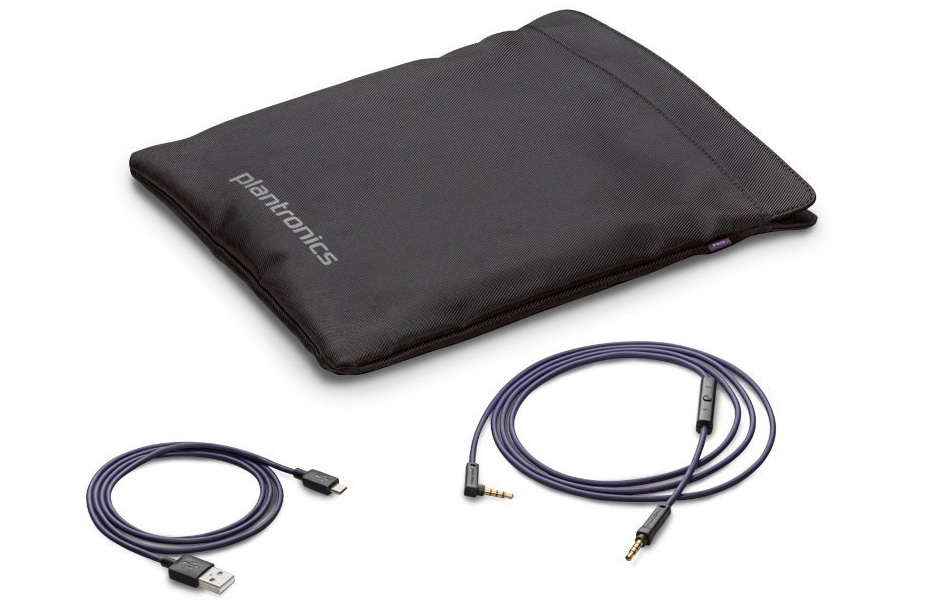
Although the BackBeat Pro are wireless, you never know when an audio cable will come in handy. For those instances, Plantronics includes a purple, 59-inch audio cable. Unfortunately, the cable is Apple-exclusive, so I couldn't use the in-line remote to skip tracks or adjust volume on the Moto X (2014) or my Nokia Lumia 925. Plantronics does make a standard audio cable, but you'll have to pay an additional $19.99.
Noise Cancellation
The BackBeat Pro deliver effective active noise cancellation, thanks to the four microphones hidden beneath the strategically placed aluminum mesh. When you combine that with the passive noise cancellation that the seal of the plush ear cups creates, you've got a near fortress of solitude on your head.

In a sound-off against the Phiaton Chord MS 530, the Pro did a much better job of shutting out noise. The headphones held up well in our office, immediately muting our co-worker's somewhat loud humming to a faint whisper. With the Phiaton headphones, I could still hear her inadvertently serenading me and the almost-rhythmic pecking of her keyboard.
The Pro also blocked out most of the NYC subway noise; an accordion player standing right in front of me became a dull roar. In comparison, I heard nearly every subway announcement as well as the unwanted accordion concert when wearing the Phiaton 530. Also, due to the 530 ear cups' flat surface, they can't create as tight a seal, meaning they don't deliver much passive isolation.
Overall, the BackBeat Pro delivered solid active noise cancellation, but they couldn't compete with the Bose QuietComfort 25 headphones in that department. In every scenario, the QC 25s created a quiet space in a storm of noise. In the office, virtually all conversation sounded like whispers, and I couldn't hear a single clicking keyboard. The wandering accordion player's assault on my ears was lowered to a negligible tone.
OpenMic
In addition to active noise cancellation, the BackBeat Pro headphones also have a unique feature called OpenMic. Triggered with a push of a button, OpenMic allows ambient noise into the normally closed soundscape, pushing whatever was originally playing into the background.

Once the feature is enabled, you can adjust the external noise volume using the right dial on the ear cup. Plantronics says it added this feature so you can hold a conversation without having to remove the headphones. At half volume, I could hear my boyfriend speaking, but I kept getting distracted by the mean groove in the background. Shutting the music out completely allowed me be fully engaged.
A side benefit of OpenMic is that you can eavesdrop on people around you, as it appears you're listening to music and not their conversation. Not that I did that.
Performance
There's a fine line between volume and detail, and Plantronics walks it like a boss. As I listened to Jay Z's "Blue Magic," my ears were awash in big thumping bass, full organ, crisp percussion and the rapper's smooth cadence.
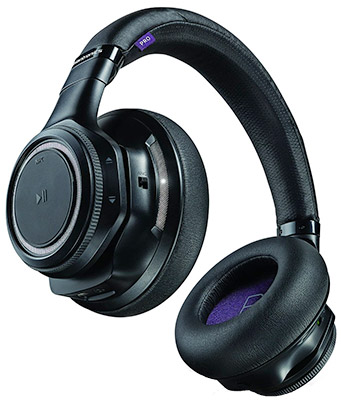
There was ample separation, allowing Pharrell's lush background vocal to cascade along gently with the instrumentals. The same track on the Phiaton 530 sounded like a distant echo. Not only was the volume significantly lower, but the 530 lacked detail. The Bose QuietComfort 25s had more volume and presence than the MS 530. However, when I compared that to the more sonically balanced BackBeat Pro, I couldn't help but notice that the highs were harsher on the QC 25s.
MORE: Best Bluetooth Speakers Available Now
The 530 performed better on Evanescence's "My Immortal (Band Edition)," producing a more cohesive sound, complete with clear strings, rich piano and a haunting, lilting vocal. The QC 25 continued to deliver better volume, as well as a cleaner violin. However, the Pro still had better volume and detail, particularly when it came to the wind chimes playing lightly in the background.
That's not to say that the BackBeat Pro are perfect. The headphones were overwhelmed by Kanye West's bass-heavy "Love Lockdown." The dark autotuned vocal sounded even more distorted against the wooly bass ... 808s and heartbreak indeed.
Without ANC, I could hear random subway conversations at mid-volume, and there was a noticeable drop in audio quality.
Bluetooth
Unlike most wireless headphones, which can pair with only one device at a time, the BackBeat Pro can sync with two devices simultaneously. This feature really came in handy when I was watching The Inevitable Defeat of Mister and Pete on Netflix on my Nvidia Shield Tablet. When my Moto X rang in the middle of the movie, I pressed the Phone button on the cans, which caused the audio to pause on Netflix and switch over to my phone.
Once I was done with the call, the headphones switched back to the tablet, announcing it was switching back to phone 1. (Note to Plantronics: "Device 1" would make more sense.) From there, I hit the Play button on the cans and went back to my movie.
Pairing devices is as simple as a button press. After making the Moto X discoverable, I pressed the phone button on the right ear cap down for 2 seconds until a woman's voice announced the headphones were pairing. It took only 2 to 3 seconds for my phone to discover the Pro and sync. When the sync was complete, the voice declared the pairing was successful and that phone 1 was connected.
NFC
If holding down a button is too tedious a job for you, you'll like that Plantronics has also outfitted the BackBeat Pro with an NFC chip for one-touch pairing. The process is pretty straightforward. After enabling NFC pairing on the Moto X, I pressed the phone against the left ear cup until I heard a tone, after which a pleasant female voice announced that the phone was paired.
Bluetooth Range
When it comes to Bluetooth devices, you can usually expect a range of about 33 feet, thanks to their class 2 radios. But Plantronics outfitted the Bluetooth 4.0-compatible BackBeat Pro with a class 1 radio, significantly raising the headphones' range to 300 feet.
Even at a distance of 150 feet away from my Moto X, audio from the BackBeat Pro remained strong. In comparison, the Phiaton Chord MS tapped out around 45 feet.
Battery Life
According to Plantronics, the BackBeat Pro headphones' lithium-ion battery can last up to 24 hours on a single charge while playing music via Bluetooth with active noise cancellation engaged. If you're just using ANC sans Bluetooth, the company estimates that you'll get up to 60 hours of battery life.
In comparison, the Bose QuietComfort 25 can last up to 35 hours on a single AAA battery.
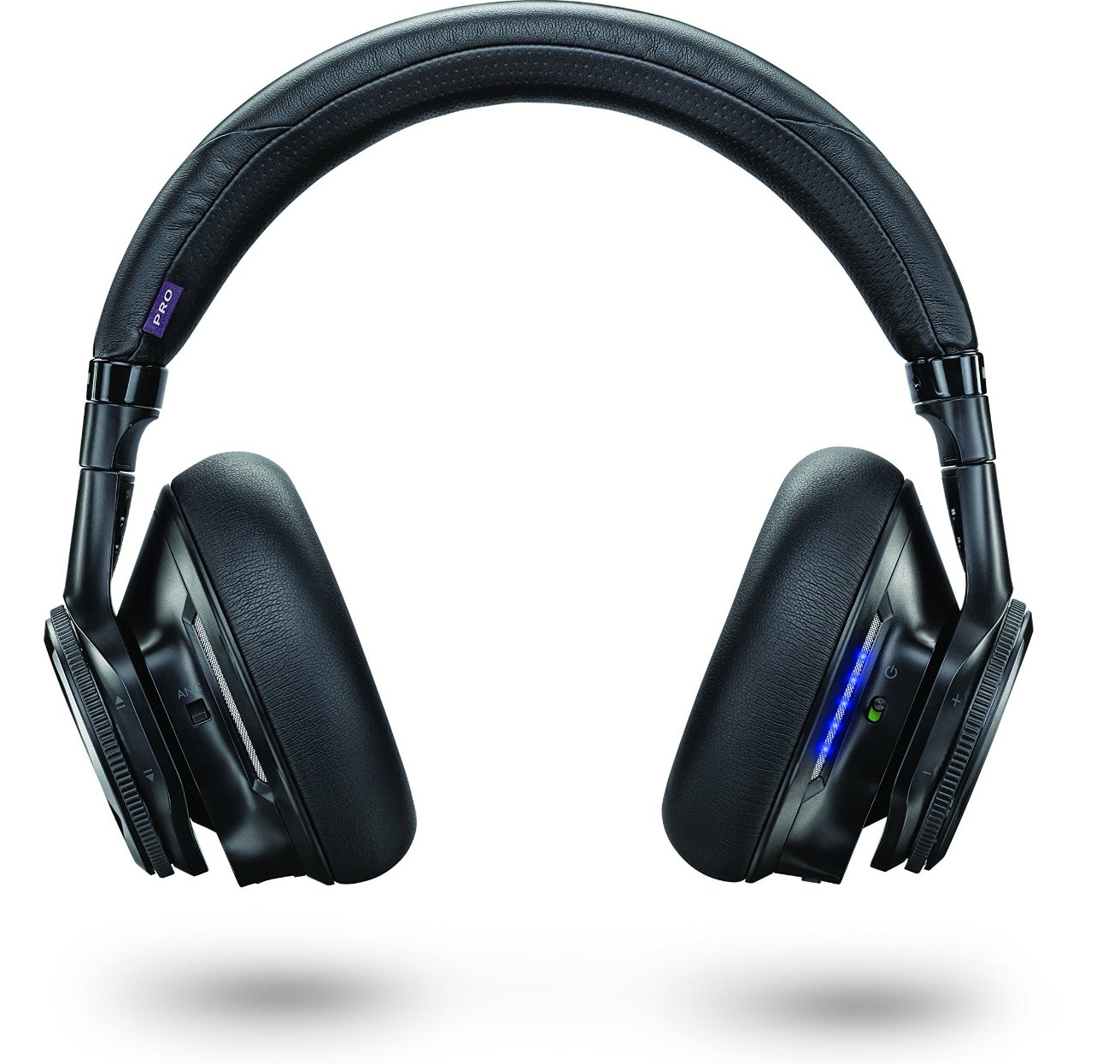
Phiaton estimates that the MS Chord 530 headphones should get up to 18 hours of battery life with ANC on, and 30 hours without.
In the month I used the cans, I rarely had to seek out a wall charger. It took me an entire week to wear the headphones down to medium, which the female voice announced during a train ride from the Bronx to Brooklyn.
The LED battery indicators finally dipped down to red a little past the one-month mark. Once it died, I just plugged in the audio cable and kept on rocking. While I could no longer use the ANC feature, I could still listen to my music. When I got around to charging the Pro, it took approximately 3 hours to get a full charge.
To further conserve your battery, Plantronics offers a DeepSleep mode feature, which places the Pro into hibernation when the connected device is away from the headphones.
Call Quality
The BackBeat Pro series of microphones comes in handy when it's time to make a phone call. Whether I was calling my mom's cell or my nana's landline, calls sounded loud and clear on both ends, even though I was making my way through the hustle and bustle of Times Square. My mom reported a relatively clear call, but she said she could hear the cars honking faintly in the background.
Bottom Line
Bluetooth? Check. NFC? Check. Extremely long battery life? Check. Great audio quality? Check. Plantronics' kitchen-sink strategy is a winner. The $249 BackBeat Pro pack a host of useful features into a comfortable set of headphones that deliver loud and accurate sound. The active noise-cancelling technology creates a quiet bubble of peace, but the OpenMic makes the outside world just a button press away. The headphones can also be paired to two devices, which is great if you have a tablet and a phone, or two phones.
For those who value peace and quiet above all else, the $299 Bose QuietComfort 25 headphones offer superior noise cancellation in a lighter package. However, if you want to go wireless, the Plantronics BackBeat Pro is one of the best sets of headphones on the market for techies and music fans alike.
Sherri L. Smith has been cranking out product reviews for Laptopmag.com since 2011. In that time, she's reviewed more than her share of laptops, tablets, smartphones and everything in between. The resident gamer and audio junkie, Sherri was previously a managing editor for Black Web 2.0 and contributed to BET.Com and Popgadget.
